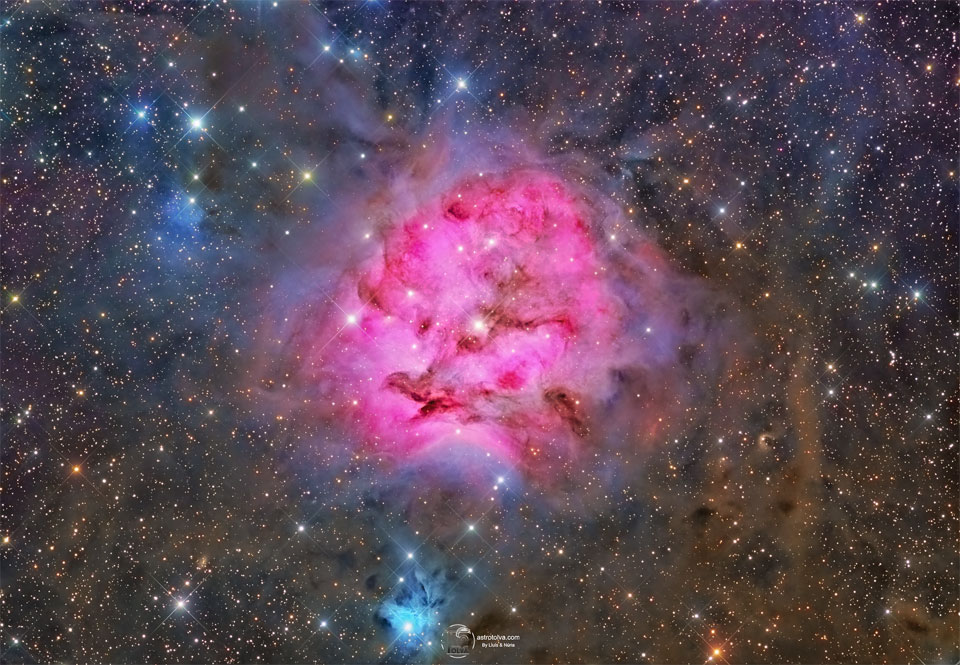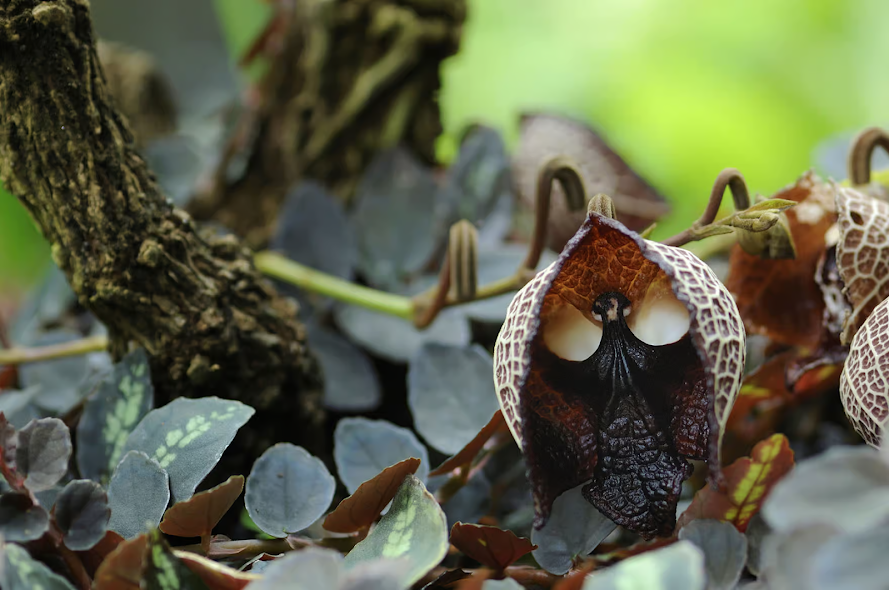Nombre total de pages vues
22/08/2024
SANTé/MEDECINE - Adolf Eugen Fick - inventeur des lentilles de contact
ASTRONOMY - The Dark Tower in Scorpius
2024 August 22
Image Credit & Copyright: Mike Selby
Explanation: In silhouette against a crowded star field along the tail of the arachnological constellation Scorpius, this dusty cosmic cloud evokes for some the image of an ominous dark tower. In fact, monstrous clumps of dust and molecular gas collapsing to form stars may well lurk within the dark nebula, a structure that spans almost 40 light-years across this gorgeous telescopic portrait. A cometary globule, the swept-back cloud is shaped by intense ultraviolet radiation from the OB association of very hot stars in NGC 6231, off the upper right corner of the scene. That energetic ultraviolet light also powers the globule's bordering reddish glow of hydrogen gas. Hot stars embedded in the dust can be seen as bluish reflection nebulae. This dark tower and associated nebulae are about 5,000 light-years away.
INVENTIONS DE DEMAIN - L'ovaire artificiel redonne espoir
21/08/2024
BEAUX POISSONS EXOTIQUES - Le poisson ange royal
ASTRONOMY - Fermi's 12-year All-Sky Gamma-ray Map
2024 August 21
Image Credit: NASA, DOE, Fermi LAT Collaboration; Text: Barb Mattson (U. Maryland, NASA's GSFC)
Explanation: Forget X-ray vision — imagine what you could see with gamma-ray vision! The featured all-sky map shows what the universe looks like to NASA's Fermi Gamma-ray Space Telescope. Fermi sees light with energies about a billion times what the human eye can see, and the map combines 12 years of Fermi observations. The colors represent the brightness of the gamma-ray sources, with brighter sources appearing lighter in color. The prominent stripe across the middle is the central plane of our Milky Way galaxy. Most of the red and yellow dots scattered above and below the Milky Way’s plane are very distant galaxies, while most of those within the plane are nearby pulsars. The blue background that fills the image is the diffuse glow of gamma-rays from distant sources that are too dim to be detected individually. Some gamma-ray sources remain unidentified and topics of research — currently no one knows what they are.
20/08/2024
SANTé/MEDECINE - Alois Alzheimer - premier neurologue à décrire la maladie d'Alzheimer
ASTRONOMY - Supermoon Beyond the Temple of Poseidon
2024 August 20
Image Credit: Alexandros Maragos
Explanation: A supermoon occurred yesterday. And tonight's moon should also look impressive. Supermoons appear slightly larger and brighter than most full moons because they reach their full phase when slightly nearer to the Earth -- closer than 90 percent of all full moons. This supermoon was also a blue moon given the definition that it is the third of four full moons occurring during a single season. Blue moons are not usually blue, and a different definition holds that a blue moon is the second full moon that occurs during a single month. The featured image captured the blue supermoon right near its peak size yesterday as it was rising beyond the Temple of Poseidon in Greece. This supermoon is particularly unusual in that it is the first of four successive supermoons, the next three occurring in September, October, and November.
19/08/2024
BEAUX POISSONS EXOTIQUES - Le véritable Némo
ASTRONOMY - IC 5146: The Cocoon Nebula
2024 August 19
Image Credit & Copyright: Luis Romero Ventura
Explanation: Inside the Cocoon Nebula is a newly developing cluster of stars. Cataloged as IC 5146, the beautiful nebula is nearly 15 light-years wide. Soaring high in northern summer night skies, it's located some 4,000 light years away toward the constellation of the Swan (Cygnus). Like other star forming regions, it stands out in red, glowing, hydrogen gas excited by young, hot stars, and dust-reflected starlight at the edge of an otherwise invisible molecular cloud. In fact, the bright star found near the center of this nebula is likely only a few hundred thousand years old, powering the nebular glow as it clears out a cavity in the molecular cloud's star forming dust and gas. A 48-hour long integration resulted in this exceptionally deep color view tracing tantalizing features within and surrounding the dusty stellar nursery.
18/08/2024
PLANTES FASCINANTES - Le vengeur masqué : l'Aristolochia salvadorensis
ASTRONOMY - The Observable Universe
2025 November 23 The Observable Universe Illustration Credit & Licence : Wikipedia , Pablo Carlos Budassi Explanation: How far can ...

-
2022 September 26 All the Water on Planet Earth Illustration Credit: Jack Cook, Adam Nieman, Woods Hole Oceanographic Institution ; Data ...
-
2025 May 11 The Surface of Venus from Venera 14 Image Credit: Soviet Planetary Exploration Program , Venera 14 ; Processing & Copyri...









